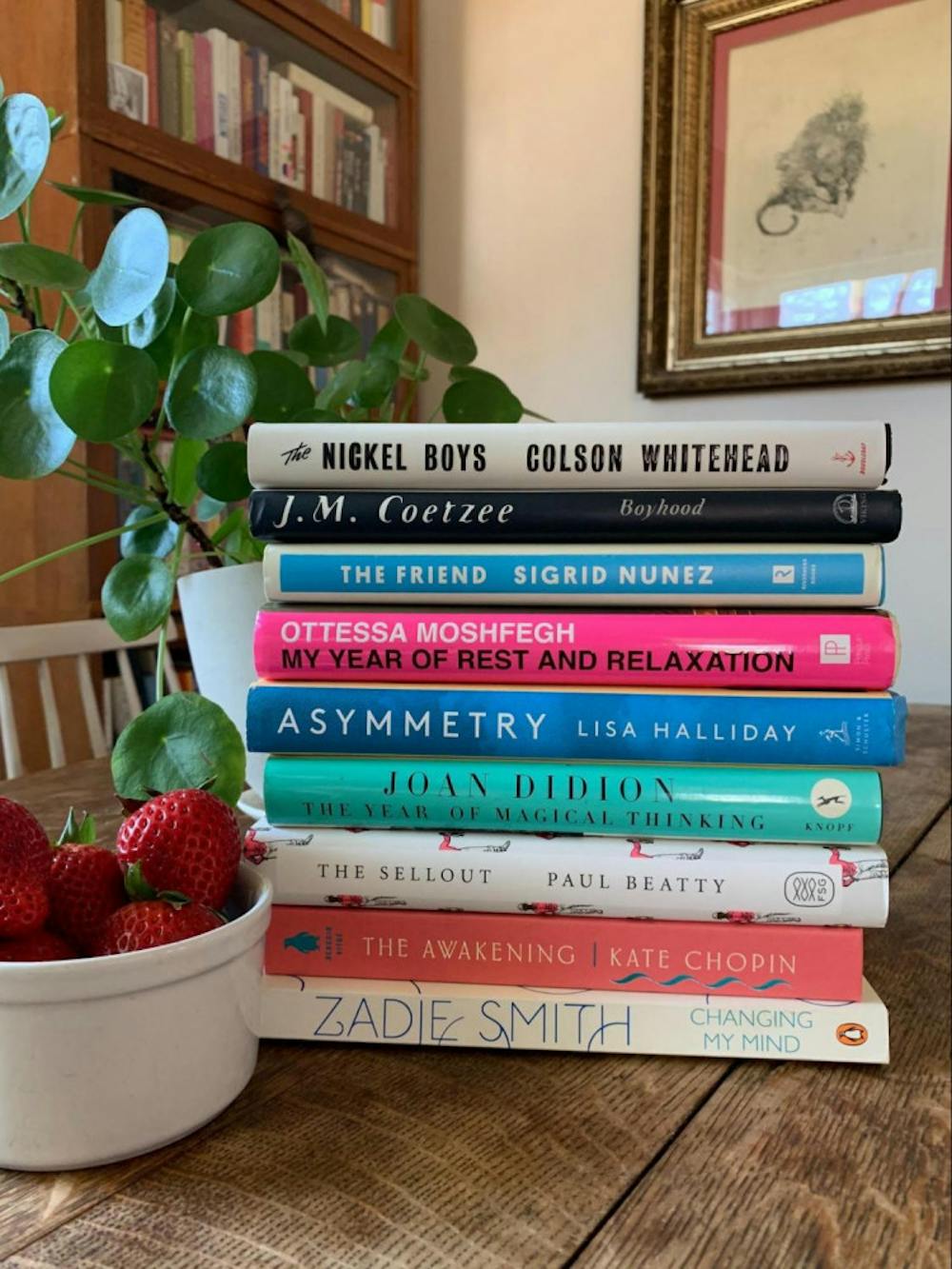Of all the forms of isolation bred in this national distancing experiment — physical at best, and at worst its insidious cousins of the emotional, mental and social varieties — literature has borne witness to each. Whether we’ve staved them off or found ourselves embroiled in them, we’re all experiencing at least one: the government-mandated type. (The only type that might have driven Thoreau out of the woods.)
But I’m not going to tell you to go read “Walden” — it feels a bit condescending to be told to “live deliberately” when the only thing keeping one compos mentis is a two-pound bag of Swedish Fish and the Apple podcast app. I’m also going to leave off much of the other seemingly go-to isolation literature — Virgina Woolf’s “To the Lighthouse,” Charlotte Brontë’s “Jane Eyre,” Charlotte Perkins Gilman’s “The Yellow Wallpaper” and anything by Sylvia Plath, Emily Dickinson and James Joyce. (Which is not to say I don’t recommend them.)
In lieu, here’s a list of six books to help you lay bare, dissect and anatomize your own isolation in all of its mordant and oft-unseen incarnations.

Stack of books with a side of strawberries and house plant.
1. “My Year of Rest and Relaxation” by Ottessa Moshfegh
If I could recommend one queen quarantine book, it would be this one. Truth be told, any of Moshfegh’s books could fill this slot — she was once described by Jia Tolentino as “the most interesting contemporary American writer on the subject of being alive when being alive feels terrible” — but this novel seems particularly germane. Maybe it’s because the book features a recent college graduate in self-inflicted exile from her own life in New York City, or maybe it’s Moshfegh’s all-too-apt shrewdness in accounting the experience of little-to-no experience. Either way, this novel is a bleary-eyed walk worth taking through a life where time itself is held captive.
2. "The Trial” by Franz Kafka
Kafka, a literary horseman of self-isolation, is another author whose entire body of work could essentially fit this list. “The Trial,” his standout novel among a slew of short stories and novellas, follows Josef K. around a tortuous bureaucratic carousel as he tries to make sense of a life that does its best to spin him into disoriented monotony. A recent essay in The Los Angeles Review of Books pinpoints this well — of all the doors opening and closing for Josef K. in “The Trial,” we see a frustratingly similar number in front of us in this pandemic. Yes, watching them swing in real time can get disheartening, and yes, this novel understands.
3. “Don’t Let Me Be Lonely: An American Lyric” by Claudia Rankine
This book engages with a topic that seems to stare down those of us in quarantine: what’s the right role for the individual within this writhing political culture? “An American Lyric” is one of Rankine’s signature literary forms, quilting segments of prose, poetry and television imagery. The first time I sat down with it, I read it twice before leaving my chair. If you don’t know how to think, feel or act on all the things going on in the news, happening around you or stirring within you that make you feel alone, this book will deliver headway.
4. “The Friend” by Sigrid Nunez
This novel is at once a meditation on grief and a portrait of the relationships we may increasingly have with our pets as we inevitably spend every hour with them. When the narrator’s worshipped literary mentor dies, she is pressed to adopt his grief-stricken Great Dane named Apollo. Through her own deep grief and waning grasp on her writing, she pushes further into her own isolation with Apollo, all the while ruminating on expression itself. As many of us lean into the solace of our pets in inadvertent replacement of those we can’t see, this book can at times feel like a pat on the head. “I know this is all moronically anthropomorphic,” writes Nunez, “but sometimes that is the form love takes.”
5. “Boyhood: Scenes from Provincial Life” by J.M. Coetzee
Coetzee’s 1998 novel “Boyhood” is one of two fictionalized accounts of his own childhood in Cape Town published in the years leading up to his Nobel Prize. This one, the first, roams through a life cut into sections. Within each, there is a boy under a new identity, reconciling action and self-perception in a life that he has yet to feel comfortable in. This book holds water for the many whose lives have been disrupted by the pandemic, and those who themselves are reconciling with identity when left alone to define it.
6. “The Nickel Boys” by Colson Whitehead
In his latest novel “The Nickel Boys,” Pulitzer Prize-winning author Colson Whitehead follows a young Elwood Curtis through the most odious form of isolation on this list. Amid the Civil Rights movement, Elwood, a black teenager about to enroll in college in Florida, is sent to the Nickel Academy reformatory for a mistake. Together yet alone, remembered yet forgotten, the reformatory’s occupants contend with their notions of humanity while forced to source it from within. Though I could not possibly argue that this experience runs parallel to ours in quarantine, Whitehead's insights ring true across them. “If it is true for you,” he writes, “it is true for someone else, and you are no longer alone.”
A quarantine reading list for the lonely

HATTIE LEFAVOUR/THE MIDDLEBURY CAMPUS
Comments



